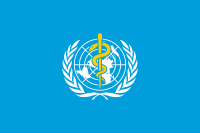
Photo from wikipedia
ETHNOPHARMACOLOGICAL RELEVANCE In spite of the rich bio-cultural diversity found in the Neotropics relatively few herbal drugs native to South America are included in the global pharmacopoeia. MATERIAL AND METHODS… Click to show full abstract
ETHNOPHARMACOLOGICAL RELEVANCE In spite of the rich bio-cultural diversity found in the Neotropics relatively few herbal drugs native to South America are included in the global pharmacopoeia. MATERIAL AND METHODS In the attempt to historically explain the inclusion of herbal drugs into official pharmacopoeias we consider the disparate epidemiology and cultural evolution of the New and the Old World. We then trace the development of pharmacopoeias and review forces that worked towards and against the synchronization of pharmacopoeias and highlight the role of early chemical and pharmacological studies in Europe. Finally, we compare the share of exotic and native herbal drug species included in the Brazilian Pharmacopoeia with the share of exotic and native species included in the European Pharmacopoeia as well as those used for products registered with ANVISA. RESULTS The domination of Eurasian herbal drugs in the European Pharmacopoeia seems to be conditioned by the geographical extension of Eurasia, which facilitated the interchange of materia medica and the creation of a consensus of use since ancient times. At the time of the Conquest the epidemiology of the Amerindian populations resembled that of pre-agriculturalist societies while no written consensus around efficacious medicine existed. Subsequently, introduced and well-tried plant species of the Old World gained therapeutic importance in the New World. CONCLUSION The research focus in Europe and the US resulted in a persistence of herbal drugs with a historic importance in the European and US pharmacopoeias, which gained a status as safe and efficacious. During the last decades only few ethnopharmacological field-studies have been conducted with indigenous Amerindian groups living in the Brazilian Amazon, which might be attributable to difficulties in obtaining research permissions. Newly adopted regulations regarding access to biodiversity and traditional knowledge as well as the simplified procedure for licencing herbal medicinal products in Brazil prospects an interesting future for those aiming at developing herbal medicine based on bio-cultural diversity and respecting the protocols regulating benefit sharing.
Journal Title: Journal of ethnopharmacology
Year Published: 2019
Link to full text (if available)
Share on Social Media: Sign Up to like & get
recommendations!